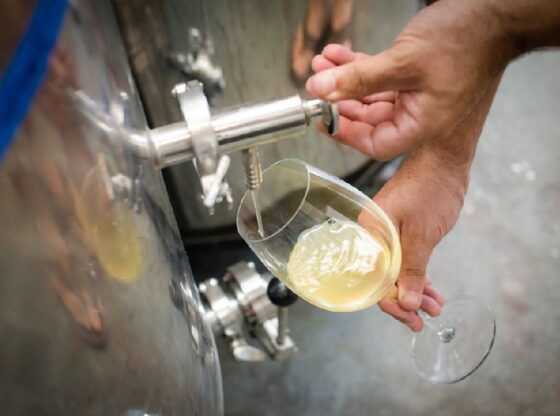
By Hendre’ Barnard, Training and Marketing Manager
Distillique Beverage (Pty) Ltd.
https://distillique.co.za
Click <Here> to see more of Hendre’s articles.
The continuous monitoring of fermentations is a common technique used in Beer Brewing and Wine Making to achieve specific results in terms of flavour, aroma, alcohol content, etc. In fermentations for distilling purposes however, we monitor the fermentations merely to ascertain the progress of the fermentation, to calculate the remaining sugar and to calculate possible yield or additional yield.
We can also predict possible problems and determine causes of fermentation problems.
What do we keep track of during Fermentation Monitoring?
We monitor three basic aspects of the fermentation – the SG reading (specific gravity or sugar content), the pH level and temperatures.
How do we Sample our Fermentations?
To measure anything, we need to draw out samples on a daily or (for large commercial fermentations) preferably twice daily basis. Ideally these samples should be drawn from a tap at the bottom of the fermentation vessel so as not to disturb the fermentation, and more importantly, to not allow oxygen into the fermentation vessel to reactivate a respiratory phase.
The tap for these samples should not be mounted right at the bottom of the vessel but raised a little so that you can draw a sample off without taking any sediment with it. Using a small measuring cylinder, no larger than 100 ml, will enable you to limit wastage during these measurements.
When monitoring fermentations in Barrels or Buckets without taps, a simple Siphon or Pipette will work best.
What do we Measure during Fermentation Monitoring?
Let’s look at the easy measurement first. The pH level is measured by using either a digital pH meter or pH strips. The first indicator we check for is a drop in the pH level over the first couple of days. This is an indicator that the fermentation is starting off correctly. We can pick a warning sign up with these measurements as well. If the pH level continues to drop, we can adjust the pH upwards to avoid a failed or stalled fermentation (as per the Article covering Failed Fermentations).
More important however are the SG measurements. Remember what the SG meter measures – the concentration or presence of sugar in the fermentation. Also remember what the fermentation process does – sugar gets converted to alcohol and carbon dioxide. Therefore, the longer the fermentation process continues, the more sugar is converted to alcohol, the less sugar remains in the fermentation, and the lower (closer to 1.00) the SG reading will be.
VERY IMPORTANT – Both a Refractometer and a SG Meter can be used to measure sugar in a fermentation, but only a SG Meter can measure sugar once the fermentation process has started.
The reason for this is that while both measuring instruments work on fluid density to determine sugar content, the Refractometer relies on the breaking of light through the fluid as affected by density, while the SG meter utilizes the buoyancy differences of different densities. With a mixed solution – as in a fermentation that is underway and contains both sugar and alcohol – the light breaking properties of the solution is affected, and the Refractometer therefore does not give an accurate reading, hence it is of no use in monitoring fermentation progress.
By taking multiple measurements per day (two) and recording them, we can track the progress of our fermentation, see when it slows down, see when it done, and predict if it will stop too quickly (a failed fermentation). This same reading (if the fermentation stops) will also assist us in deciding whether it is worth rectifying the problem or not, based on the amount of sugar remaining. The formulas in our Article on Sugar Calculations will be helpful in this instance.
For the small-scale distiller (home distiller) the third measurement – temperature – is more relevant in winter than summer. How can we say this? Simply because it is easier to heat a small batch to a specific temperature than it is to cool it down.
Remember that the higher the temperature of the fermentation, the higher the rate of chemical reactions, the faster the fermentation progresses, but the more congeners (bad flavours and aromas) form. It is therefore preferable to have a slow, steady fermentation at a lower temperature.
To cool down a small batch is however difficult, and mostly we would rely on finding the coolest place in our garage or house, putting it in a cold water bath (which is difficult to control) or trying to control the ambient temperature through air-conditioning, fans or misters (which is energy and/or water intensive).
To heat a small batch is much easier – either wrap it in a blanket or insulation material, put it close to the vent of your fridge or freezer, or put it in a water bath with an aquarium heater.
For larger fermentations it becomes a matter of hardware – either internal cooling coils or external jackets on the fermentation vessels – which can be used to control the fermentation temperature.
How do I Monitor small Fermentations?
Taking 100 ml twice a day over 10 days adds up to 2 lt of mash drawn off for testing, and if we were aiming for an ABV % of 10% after fermentation, that means we have lost 200 ml of potential alcohol. This is negligible for a commercial distillery if you are working with 200 lt fermentations or larger, but it is considerable for the home distiller working with 10 to 20 lt fermentations.
So, what to do?
In small batches, continuous monitoring is not really necessary or feasible. In these cases we would normally use our Airlocks or Bubblers as an indicator of when the fermentation process has stopped, and then confirm that the fermentation was dry or complete using our SG meter (SG reading of 1.00 or lower indicates all sugar has been fermented to alcohol). This is enough for us to know whether or not the fermentation has actually stopped because it was successful, or if it has failed for some reason.
Hopefully this information will assist you in producing more successful fermentations.
Keep on Distilling!

